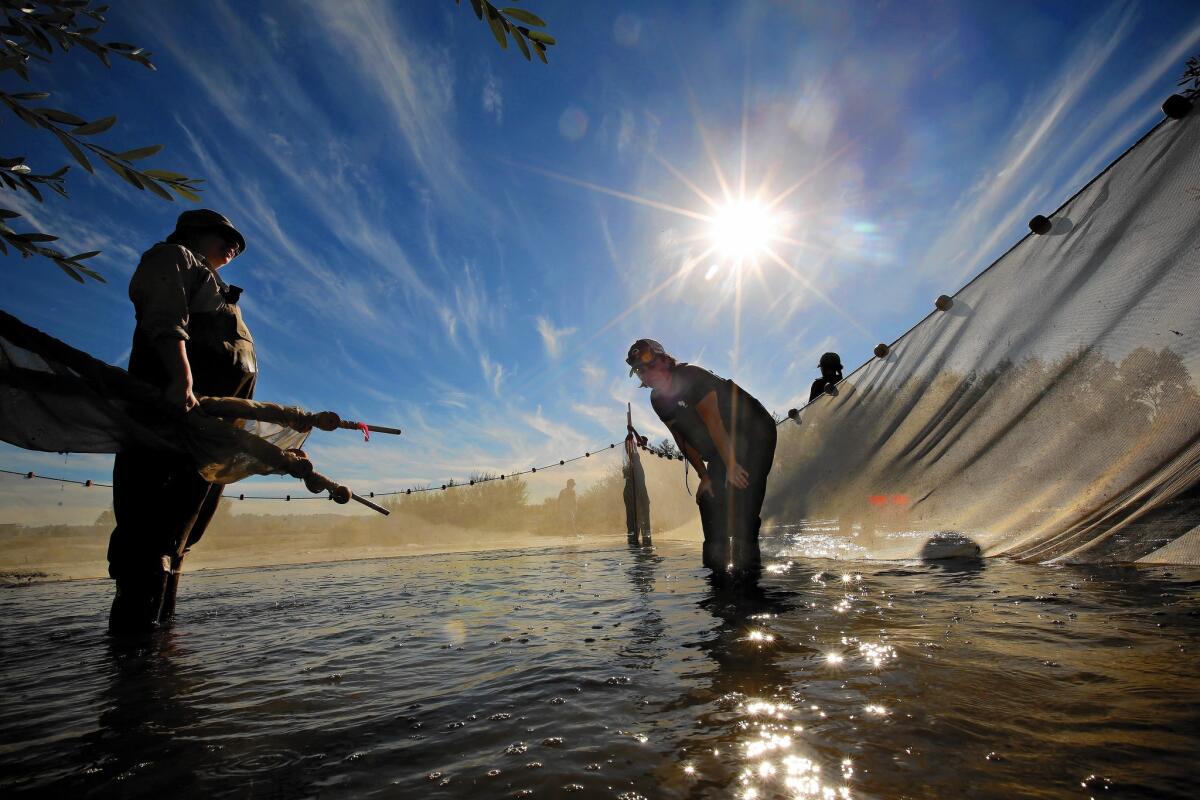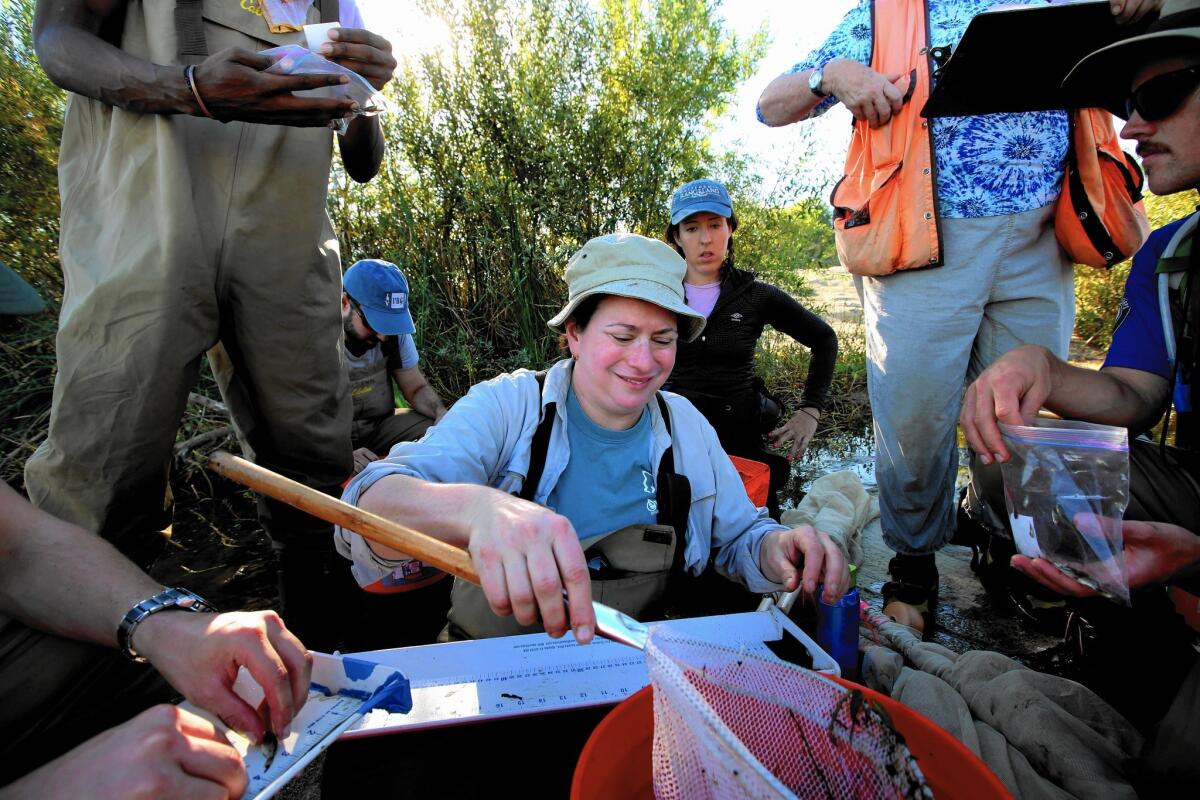Will El Niño be able to flush fish invaders out of the L.A. River?

Pushing seine nets ahead of them like vacuum cleaners, biologists and a dozen volunteers on Friday launched the first inventory of fish in the Los Angeles River to determine the effects of the coming El Niño-fueled rainy season.
“Our goal is to survey this stretch again in the spring and see which species are left after floodwaters scour the river channel,” said Rosi Dagit, a senior biologist for the Resource Conservation District of the Santa Monica Mountains.
In the murky flow of treated urban runoff, the workers hoped to find a few native species that for decades have waged a battle for survival against an array of threats: flood control improvements, loss of habitat from development, runoff laced with pollutants, and aggressive, omnivorous nonnative creatures.
Instead, clinging to the mesh were mostly frisky minnows of nonnative tilapia — the descendants of fish dumped by the city in the 1970s to eat mosquitoes, carp and voracious crayfish, which were originally released by fishermen as bait.
Those invaders and others — including largemouth bass, mosquito fish and exotic aquarium fish such as Amazon sailfin catfish — make it hard for native species, such as aquatic insects and federally endangered steelhead, to rebound.
Federal climatologists are braced for an El Niño with the potential to deliver more rain than the recurring ocean phenomenon has previously poured down.
Dagit and William Preston Bowling, special projects manager at Friends of the Los Angeles River, which funded the effort, said the forecasts present a rare opportunity to test their hypothesis that most of the nonnative species will get flushed out of the 51-mile river into the Pacific Ocean.
NEWSLETTER: Get essential California headlines delivered daily >>
That’s because, unlike Southern California’s fish species, they did not evolve in river systems that are prone to sudden torrents of water, mud, boulders and debris in winter and are reduced to pools and damp patches in summer.
“This is a particularly enterprising survey,” Bowling said. “But then, surprisingly few studies of fish in the river, natives and nonnatives alike, have been conducted. There’s a lot to learn out here.”
Friday’s expedition used seines, dip nets, and rods and reels to capture fish along a 1/4-mile-long stretch — roughly 200 feet wide, knee deep and shaded by willows — running through a portion of the San Fernando Valley’s Sepulveda Basin, which includes Haskell Creek, Encino Creek and Pot Hole Pond tributaries.
The river water was an unusually warm 77 degrees, and all but devoid of native species.

The team conducted a similar inventory in Topanga Wash in October with a focus on federally endangered steelhead.
The estimated 500 Southern California steelhead left on Earth are scattered across coastal waters between San Luis Obispo and the U.S.-Mexico border.
Steelhead packed spawning pools of the Los Angeles River before it was transformed into a concrete flood-control channel in 1938. The last steelhead in the Los Angeles River was caught off a Glendale bridge in 1948.
In the last few years, however, environmentalists, state and federal wildlife authorities and other government officials have banded together to rehabilitate the Los Angeles River’s 834-square-mile watershed, assess its health and save what remains of its struggling wildlife.
The U.S. Army Corps of Engineers has recommended approval of an ambitious, $1-billion proposal to restore habitat, widen the river, create wetlands, and provide access points and bike trails along an 11-mile stretch north of downtown.
On Friday, the fish were identified and cataloged before being released back into the currents.
By 3 p.m., after a six-hour effort, the team had netted roughly 3,000 tilapia, two dozen crayfish, a few hundred mosquito fish, one exotic aquarium species known as plecostomus and two Asian freshwater clams.
“If we are ever going to fully understand the ecology of this river, and prospects for the return of species that evolved in it,” Dagit said, “we have to know first what’s in it now, and how well those creatures do in extreme conditions.”
ALSO
California’s top court sends Newhall Ranch project back to the drawing board
Cold front brings record lows to Northern California; Southland to warm up
Ex-L.A. County sheriff’s deputies sentenced to prison for beating of jail visitor
More to Read
Sign up for Essential California
The most important California stories and recommendations in your inbox every morning.
You may occasionally receive promotional content from the Los Angeles Times.











